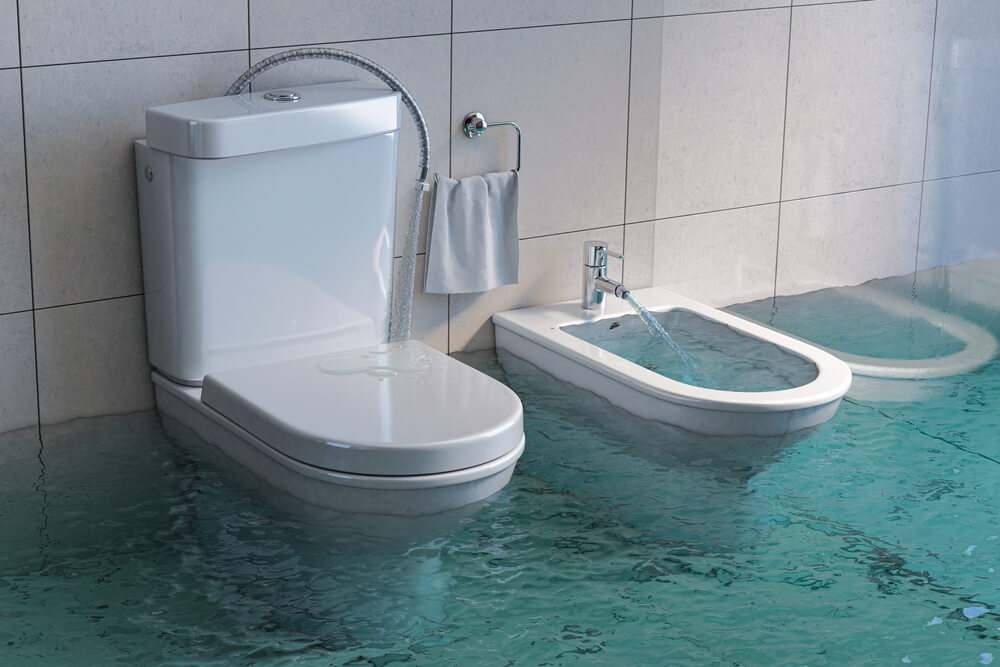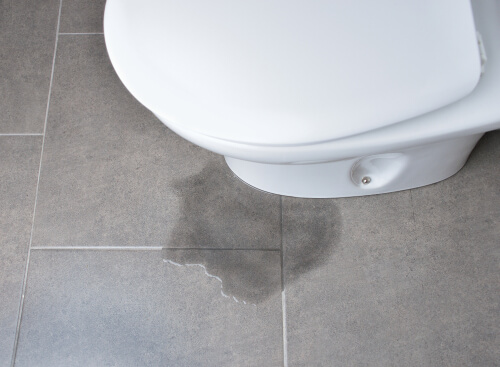3 Signs Your Toilet Is Leaking or Needs Repair

Homeowners are always looking for ways to save energy and money with home improvement projects, purchasing more efficient appliances, and looking for other ways to save. One major home fixture that often gets overlooked is the toilet.
A neglected toilet can waste hundreds or thousands of gallons of water a year, and water damage can add up to a horrifying repair bill. The EPA estimates that water losses from leaking toilets can cost up to 21,600 gallons of water per month with a bill of $2,100 per year.
Is there a brown stain around the base of the toilet? Does your toilet endlessly run or make noise when it’s not in use? Here are some signs that your toilet is wasting water or needs repairs and how to address these problems.
1. Water at the Base of the Toilet

Have you noticed a watery stain around the base of your toilet? Does it come back after wiping it away? This is likely due to a leak in your toilet.
If water is coming out of the base of your toilet, this usually means there is either a crack in your toilet or your wax ring needs to be replaced. You should never wait to address this issue. Water coming from the base of your toilet is a serious issue that can cause significant damage to your property. While an increased water bill is a concern, it pales in comparison to replacing the baseboard, flooring, subfloor, and any joists because they are sodden and no longer structurally sound.
A crack in your toilet is not repairable. Any attempted repairs will not last, and the toilet will need to be replaced.
If the problem lies with the wax ring, this is a much easier fix. The toilet will need to be drained and removed from its mounting bolts. Replace the old wax ring with a new one; we recommend an extra thick wax ring to be certain it properly connects your toilet to the drain. While the thick ones might cost double a standard one, it’s still usually less than $10.
An experienced plumber or a team of two DIYers can replace the toilet and carefully seat it on the new wax ring. Once properly balanced, the bolts can be tightened back down to ensure a tight seal on the wax ring. Do not drop the toilet, or it may crack and have to be replaced. If you are not confident in properly seating the toilet, it is best to call a plumber.
2. The Toilet Doesn’t Easily Flush, or the Flush Is Weak
Do you have to hold the toilet handle down for a few seconds, or do you have to jiggle the toilet handle to get it to flush? If your toilet doesn’t flush easily and effortlessly, there is likely a problem with the internal mechanism in your toilet’s tank. You should not have to press and hold the handle to flush your toilet, nor should you have to jiggle the handle to stop your toilet from endlessly running.
Try these solutions for a weak toilet flush:
Providing Enough Water
If your toilet’s flush is weak or it doesn’t easily flush, there could be a problem with the chain, the floater, or your water settings. Take a look inside the tank of your toilet and see if the chain is knotted or caught on anything inside. The chain should be relatively tight; there should be about half an inch of slack on a flapper chain. Make sure the chain isn’t snagged or tangled up on any internal pieces.
Additionally, make sure the floater isn’t stuck and can move sufficiently to allow the tank to fill properly.
Mineral Build-Up
It could be that over time, minerals such as calcium, lime, and rust particles have built up along the rim feed and jet holes of the toilet bowl. These deposits can restrict water from properly flushing, which causes a weak or incomplete toilet flush.
Check the bowl’s rim (feed holes) and jet holes that pump water into your bowl. If there are mineral build ups, they will need to be cleaned out. Turn off the water supply and open up your flapper. Flush your toilet and drain out the water. Use a toilet bowl cleaner like Lime-A-Way or Chlorox, and pour one to two cups of the cleaning solution down the flush valve opening (from the tank side). Don’t spill any into the tank, and wipe any away if it does.
Let the toilet sit unused for several hours, or even overnight, and let the cleaning solution dissolve any mineral buildup. Use a wire hanger or other sturdy wire to clean in and out of the rim feed holes, remove any blockages, and break the mineral deposits.
Turn on the water supply and flush water through the toilet several times to clean things out.
If you’ve determined that simple fixes won’t solve your weak flush problems, consider a pressure-assist toilet for powerful flushing.
Read More: A Brick In Your Toilet Could Be Building a Wall In Your Pipes
3. Toilet Is Constantly Running or Flushing
If your toilet is constantly running, flushing, or making noise when not in use, there is a problem with its internal mechanism. There should be no phantom flushing. After using the toilet and flushing, once the tank refills, your toilet should not be making any noise until it is used again. If it does, you likely have a toilet leak or faulty flapper.
To check if your toilet is leaking, you can check to see if the water levels in the tank drop over time, or you can put 15 drops of food coloring dye in your toilet’s tank. If, after 30 minutes, your toilet bowl has that color in it, you know that the water is leaking from your toilet tank to the bowl. The most common culprit of a leaking toilet is the flapper. Examine yours and see if the toilet flapper needs to be replaced.
If you need help diagnosing your toilet’s issue, or you know you need toilet repairs in Lexington or Louisville, Kentucky, contact the plumbing experts at Dauenhauer Plumbing. We can fix your problems or even install a new, water-efficient toilet, such as a dual-flush toilet, to help you save money on your water bill.